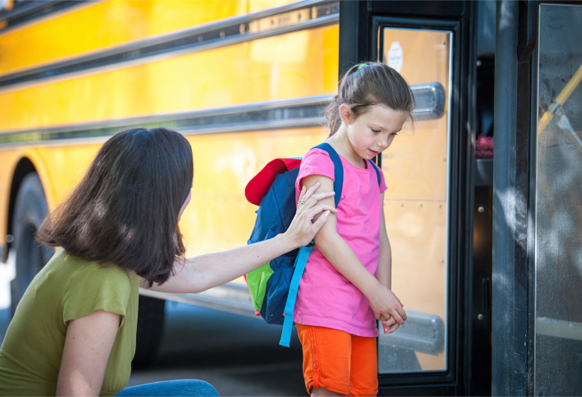Written by Peter Gray.
Most children in our society protest going to school. Am I telling you something new?
They protest in many ways—by feigning illness, by dragging their feet in the morning, by doing the least they can to meet the school’s demands (or not doing even that), and by violating school rules when they can get away with it. Even those who get high grades in school and enjoy a bit of showing off protest school through their expressions of cynicism, and sometimes by cheating, which they justify by saying that it’s all just stupid hoops to jump through anyway (see post on cheating).
Why all this protest? Education is a good thing, right? Children need to become educated to do well in society. Society goes to tremendous expense and trouble to provide schooling—lots of it!—for every child (whether they want it or not). Are these kids just spoiled ingrates? If so, then you and I—and essentially everyone else who ever attended school after schooling became compulsory—were also spoiled ingrates. We all protested it. In fact, back in the days when schools first became compulsory kids protested it even more than they do now, even though there was much less of it then. They had to be beaten with birch sticks to get them to stay in school and do what the teachers told them to do.
In my last essay I used the concept of evolutionary mismatch to explain why infants and young children protest going to bed—alone, in the dark, at night. The term refers to a lack of congruity between environmental conditions today and those that existed during the time of our evolutionary ancestors. For at least 99 per cent of our history as human beings, we were all hunter-gatherers. Anthropologists have pointed out that the hunter-gatherer way of life is the only stable way of life our species has ever known. Ever since the origin of agriculture, a mere 10,000 years ago, we have been caught in an ever-faster whirlwind of cultural change. From a biological perspective, we are all still hunter-gatherers, doing the best that we can to cope with the conditions of life that exist today. In my last essay I pointed out that infants and young children protest going to bed alone because, in hunter-gatherer days, to do so would likely lead to death. The monsters under the bed were real. They were jackals, tigers, and other nighttime predators, prowling around looking for small snacks unprotected by adults. Instincts and fears that evolved when we were hunter-gatherers have not changed.
Now I want to apply the concept of evolutionary mismatch to the problem of education.
As I pointed out in one of the first essays in this blog, the means by which children became educated in hunter-gatherer cultures were the opposite of the means by which we try to educate children in our schools today. One of the most cherished values of all band hunter-gatherer societies that have ever been studied by anthropologists is freedom. Hunter-gatherers believed that it is wrong to coerce a person to do what the person doesn’t want to do—and they considered children to be people. They rarely even made direct suggestions, because that might sound like coercion. They believed that people, on their own initiative, would learn to contribute to the welfare of the band, because they would see the wisdom of doing so and experience the joy of it. For hundreds of thousands of years, that was the organizing principle of human society.[1] The hunting and gathering life required great personal initiative and creativity, and it required trust that people would share and cooperate because they wanted to. Hunting and gathering people seemed to understand that—and they also seemed to understand that children would best grow up to be free, trusting, cooperative, creative adults if they were permitted freedom throughout their childhood, in the context of the moral community and models that the band provided.
Throughout our immense hunter-gatherer period, children were free to play and explore all day, day after day, and in that way to educate themselves. Education was always self-directed. In fact, the reason children are naturally so playful, curious, and social is because those traits were the motivating powers behind children’s abilities to educate themselves.Those “childish” traits were promoted and shaped, by natural selection, precisely to serve the function of education, in conditions of childhood freedom.
So, when we force children to sit in their seats and listen to a teacher and do just what they are told, every bone in their body, and every neuron and muscle, resists. Their body tells them, “This is wrong. I need to control my own actions; I need to play at the skills that seem to be important to me; I need to explore the questions that I’m curious about, not ones that bore me; I need to pay attention to what people in the real world are doing, not to what this teacher, who doesn’t even seem to be part of the world outside of school, is telling me. If I don’t do these things that I need to do, I will not grow up to be a competent, dignified human being.” In hunter-gatherer times, a child who did not feel so strongly driven to run his or her own life and education would have grown up to be a misfit.
So, our children have instincts that drive them to educate themselves through their free play, exploration, and socializing. But we have schools that insist that they give up that freedom and do what they are told to do. The schools have never worked well, and even in theory can’t work well, because they always pit the school against the child and thereby evoke resistance.
What are we going to do about this evolutionary mismatch?
It seems to me that we have two choices. We can continue stumbling along with our coercive system of schooling and continue to fight our children’s instincts, using drugs or whatever other means we must to dampen their cries for freedom. Or, we can adopt what to most people today seems like a radical, even crazy approach to education, but which to hunter-gatherers seemed like common sense. This radical approach is to let our children educate themselves, while we provide the conditions that make that possible.
The idea that children can direct their own education, and can do it well, seems absurd to most people today; we are so conditioned to the idea that education requires top-down direction and coercion. But, for those who are willing to take a look at it, the evidence is overwhelming that the hunter-gatherer approach to education can work beautifully in our society today. I’ve described that evidence in previous essays (see, for example, this one). We can build play and learning centers—similar to the Sudbury Valley School (link is external)—that provide children with the resources they need to educate themselves. The essential resources include access to lots of children of mixed ages to play with, access to the tools that are crucial to our culture, and access to caring adults—all within the context of a moral community that embodies the highest values of our society. Amazing as it may seem to some, this can all be done at far less expense and trouble than that extracted by our current system of coercive schooling. And this sort of institution—unlike our standard schools—is filled with excitement and joy.
Do your children protest school? Did you? What forms do (or did) the protests take? How have you dealt with the contradiction between the human drive for freedom and our coercive school system? What do you think we could do, as a society, to resolve this contradiction? I’m interested in your experiences and thoughts.
As always, I prefer if you post your comments and questions here rather than send them to me by private email. By putting them here, you share with other readers, not just with me. I read all comments and try to respond to all serious questions. Of course, if you have something to say that applies only to you and me, then send me an email.
Notes
[1] For much more on hunter-gatherers, their way of life, and their means of education, see: Gray, P. (2009). Play as the foundation for hunter-gatherer social existence. American Journal of Play, 1, 479-522. Available here.




